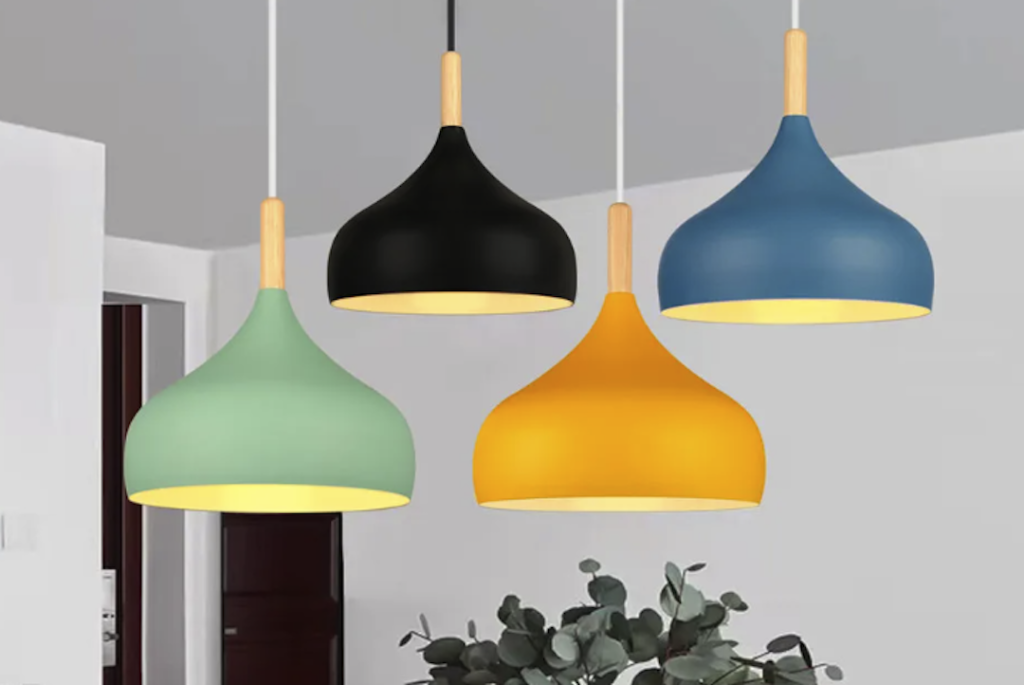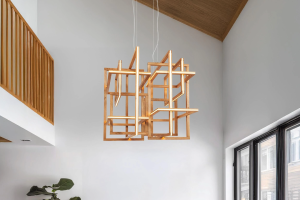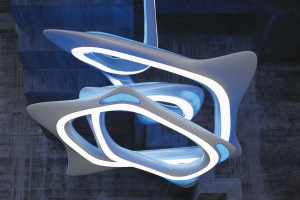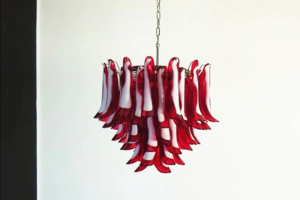Creating Ambiance: Harmonious Color Matching with Pendant Lights
8 min read
Color matching is a critical element in interior design, particularly when selecting pendant lights. These fixtures serve both functional and aesthetic purposes, making their color choice significant in shaping a room’s overall appearance. Proper color matching of pendant lights can enhance a space’s visual appeal, while poor choices may disrupt the design’s harmony.
When choosing pendant lights, it is essential to consider the room’s existing color scheme. The lights should either complement or intentionally contrast with the space’s colors to create a cohesive look. For rooms with neutral palettes, pendant lights in similar tones can blend seamlessly.
Alternatively, contrasting colors can be used to create focal points and add visual interest. Color psychology also plays a role in pendant light selection. Different colors can evoke specific emotions and moods, influencing the atmosphere of a space.
Warm tones like reds, oranges, and yellows can create a cozy ambiance, while cool tones such as blues and greens promote relaxation. Understanding these psychological effects allows for strategic use of pendant lights to enhance a room’s mood and atmosphere. By considering color matching, existing color schemes, and color psychology, one can select pendant lights that contribute to a cohesive and visually appealing interior design.
Choosing the Right Pendant Lights for Your Space
Size and Proportion
Pendant lights come in a wide range of shapes and sizes, making it essential to choose fixtures that are proportionate to the size of the room and the furniture within it. Oversized pendant lights can overwhelm a small space, while undersized fixtures may get lost in a larger room.
Style and Aesthetic
The style of pendant lights should complement the overall aesthetic of the space. Whether your design style is modern, traditional, industrial, or eclectic, there are pendant light options to suit every preference. For example, modern spaces may benefit from sleek and minimalist pendant lights with clean lines and metallic finishes, while traditional spaces may call for ornate and decorative fixtures with classic details.
Functionality and Purpose
Functionality is another crucial consideration when choosing pendant lights for your space. Depending on the purpose of the lighting, whether it’s task lighting for a kitchen island or ambient lighting for a dining area, selecting fixtures with the appropriate brightness and light distribution is essential. Dimmable pendant lights can offer flexibility in adjusting the lighting levels based on different activities and occasions.
Harmonizing Color Schemes with Pendant Lights
Harmonizing color schemes with pendant lights is an essential aspect of interior design that can greatly impact the overall look and feel of a space. When selecting pendant lights, it’s important to consider how their color harmonizes with the existing color scheme of the room. Whether you’re aiming to create a cohesive and unified look or make a bold statement with contrasting colors, understanding how different hues interact with each other is key to achieving a visually appealing interior.
One approach to harmonizing color schemes with pendant lights Buboliving is to match the fixtures with existing colors in the room. For example, if the space features a predominantly neutral color palette with shades of white, gray, and beige, choosing pendant lights in similar tones can create a seamless and cohesive look. This approach allows the fixtures to blend in with the existing decor while adding subtle visual interest.
On the other hand, if you’re looking to make a statement with contrasting colors, selecting pendant lights in bold hues that complement or accentuate other elements in the room can create a striking focal point. Another approach to harmonizing color schemes with pendant lights is to consider the psychological effects of color. Different colors can evoke specific emotions and moods, so strategically using pendant lights in warm or cool tones can influence the atmosphere of a space.
Warm tones like reds, oranges, and yellows can create a cozy and inviting ambiance, while cool tones like blues and greens can promote a sense of calm and relaxation. By understanding how different colors impact mood and atmosphere, you can use pendant lights to enhance the overall aesthetic and feel of a room. Ultimately, harmonizing color schemes with pendant lights involves considering how different hues interact with each other and their psychological effects to create a visually appealing and harmonious interior.
Using Pendant Lights to Create a Focal Point
Pendant lights can be used to create a focal point in a room by drawing attention to specific areas or features within the space. Whether it’s illuminating a kitchen island, dining table, or entryway, strategically placing pendant lights can enhance the visual interest and functionality of a room. By using pendant lights as focal points, you can add depth and dimension to the design while highlighting key elements within the space.
One effective way to use pendant lights to create a focal point is by clustering multiple fixtures together. Grouping several pendant lights above a kitchen island or dining table not only provides ample illumination but also creates a visually striking focal point. This approach adds drama and visual interest to the space while drawing attention to the designated area.
Additionally, varying the heights and sizes of the pendant lights within the cluster can further enhance the focal point by adding depth and dimension to the design. Another way to use pendant lights as focal points is by selecting fixtures with unique designs or eye-catching details. Whether it’s intricate patterns, sculptural shapes, or vibrant colors, choosing statement-making pendant lights can instantly draw attention to specific areas within a room.
For example, in an entryway or foyer, a bold and sculptural pendant light can serve as a captivating focal point that sets the tone for the rest of the space. By strategically placing attention-grabbing pendant lights in key areas, you can create visually compelling focal points that enhance the overall design of a room.
Incorporating Pendant Lights into Different Design Styles
Pendant lights are versatile fixtures that can be incorporated into various design styles to enhance the aesthetic appeal and functionality of a space. Whether your design style is modern, traditional, industrial, or eclectic, there are pendant light options to suit every preference. By selecting fixtures that complement the overall aesthetic of the room, you can seamlessly integrate pendant lights into different design styles while adding visual interest and illumination.
In modern spaces characterized by clean lines, minimalism, and sleek finishes, pendant lights with contemporary designs are ideal for creating a cohesive look. Fixtures featuring geometric shapes, metallic finishes, and minimalist details can complement modern interiors by adding a touch of sophistication and visual appeal. Additionally, incorporating LED technology into modern pendant lights can further enhance their energy efficiency and sleek aesthetic.
Traditional spaces with ornate details, classic furnishings, and timeless charm can benefit from pendant lights with decorative elements and elegant finishes. Chandeliers or lantern-style pendant lights featuring intricate designs and traditional materials like crystal or brass can add an air of sophistication and grandeur to traditional interiors. By selecting fixtures that reflect the timeless elegance of traditional design, you can seamlessly integrate pendant lights into these spaces while enhancing their overall aesthetic appeal.
Industrial design styles characterized by raw materials, exposed structures, and utilitarian elements can be enhanced with rugged and utilitarian pendant lights featuring metal finishes and vintage-inspired details. Fixtures with industrial-inspired designs such as wire cages, Edison bulbs, and weathered finishes can add an authentic industrial vibe to these spaces while providing functional illumination. Eclectic spaces that embrace a mix of styles, textures, and colors can benefit from incorporating an eclectic mix of pendant lights that reflect this diverse aesthetic.
By combining different styles, materials, and shapes within the same space, eclectic interiors can achieve a personalized and visually compelling look. Whether it’s mixing vintage-inspired fixtures with modern designs or combining various colors and textures, incorporating an eclectic mix of pendant lights into these spaces can add character and charm while enhancing their unique aesthetic appeal.
Tips for Achieving a Balanced and Harmonious Look
Considering Scale and Style
When selecting pendant lights for your space, it’s essential to consider their size in relation to the room and furniture within it. Oversized fixtures can overwhelm small spaces, while undersized ones may get lost in larger rooms. Additionally, ensure that the style of your pendant lights complements the overall aesthetic of the room, whether it’s modern, traditional, industrial, or eclectic.
Strategic Placement and Color Coordination
Strategically placing pendant lights in key areas such as kitchen islands, dining tables, or entryways can create focal points that enhance visual interest and functionality within the space. Furthermore, consider how the color of your pendant lights interacts with the existing color scheme of the room. Whether you’re aiming to match or contrast colors, ensuring that they harmonize with other elements in the space is crucial for achieving visual harmony.
Adding Depth and Dimension
Using multiple pendant lights or varying their heights within clusters can add depth and dimension to your design while creating visually compelling focal points. By following these tips, you can ensure that your pendant lights not only enhance the aesthetic appeal of your space but also contribute to creating a cohesive and visually appealing interior.
Creating Ambiance with Pendant Lights: Real-life Examples
Pendant lights are versatile fixtures that can be used to create ambiance in various settings such as residential homes, restaurants, hotels, and retail spaces. By strategically using these fixtures to enhance mood lighting and atmosphere within different environments, designers can create immersive experiences that engage all senses. In residential homes, pendant lights are often used to create cozy and inviting atmospheres in areas such as living rooms, bedrooms, and dining spaces.
By selecting warm-toned fixtures with soft diffused lighting or dimmable options that allow for adjustable brightness levels, designers can set the mood for relaxation or intimate gatherings. In open-concept spaces like kitchens or dining areas, strategically placing pendant lights above islands or tables not only provides functional illumination but also creates focal points that enhance visual interest. Restaurants often use pendant lights to establish an ambiance that reflects their brand identity and dining experience they offer.
Whether it’s creating an intimate setting for romantic dinners or an energetic atmosphere for lively gatherings, designers use various styles of pendant lights to set different moods within dining spaces. From elegant chandeliers in upscale establishments to industrial-inspired pendants in trendy eateries, these fixtures play a crucial role in shaping the overall dining experience for patrons. Hotels utilize pendant lights to create welcoming atmospheres in lobbies, lounges, guest rooms, and dining areas.
By selecting fixtures that align with their brand image and target clientele, designers use these lighting elements to establish an ambiance that reflects the hotel’s unique identity. Whether it’s creating an upscale vibe with luxurious chandeliers or a contemporary feel with sleek modern pendants, these fixtures contribute to shaping guests’ overall experience during their stay. Retail spaces often use pendant lights to enhance ambiance while showcasing merchandise in an attractive light.
By strategically placing these fixtures above display areas or along walkways within stores, designers create inviting atmospheres that encourage customers to explore products while setting an overall mood that aligns with their brand image. In conclusion, creating ambiance with pendant lights involves strategically using these fixtures to enhance mood lighting and atmosphere within different environments such as residential homes restaurants hotels retail spaces designers have used these versatile lighting elements to shape immersive experiences that engage all senses whether it’s creating cozy atmospheres in homes setting moods within dining establishments establishing welcoming vibes in hotels or enhancing retail environments these real-life examples demonstrate how designers have successfully utilized pendant lights to create ambiance in various settings



